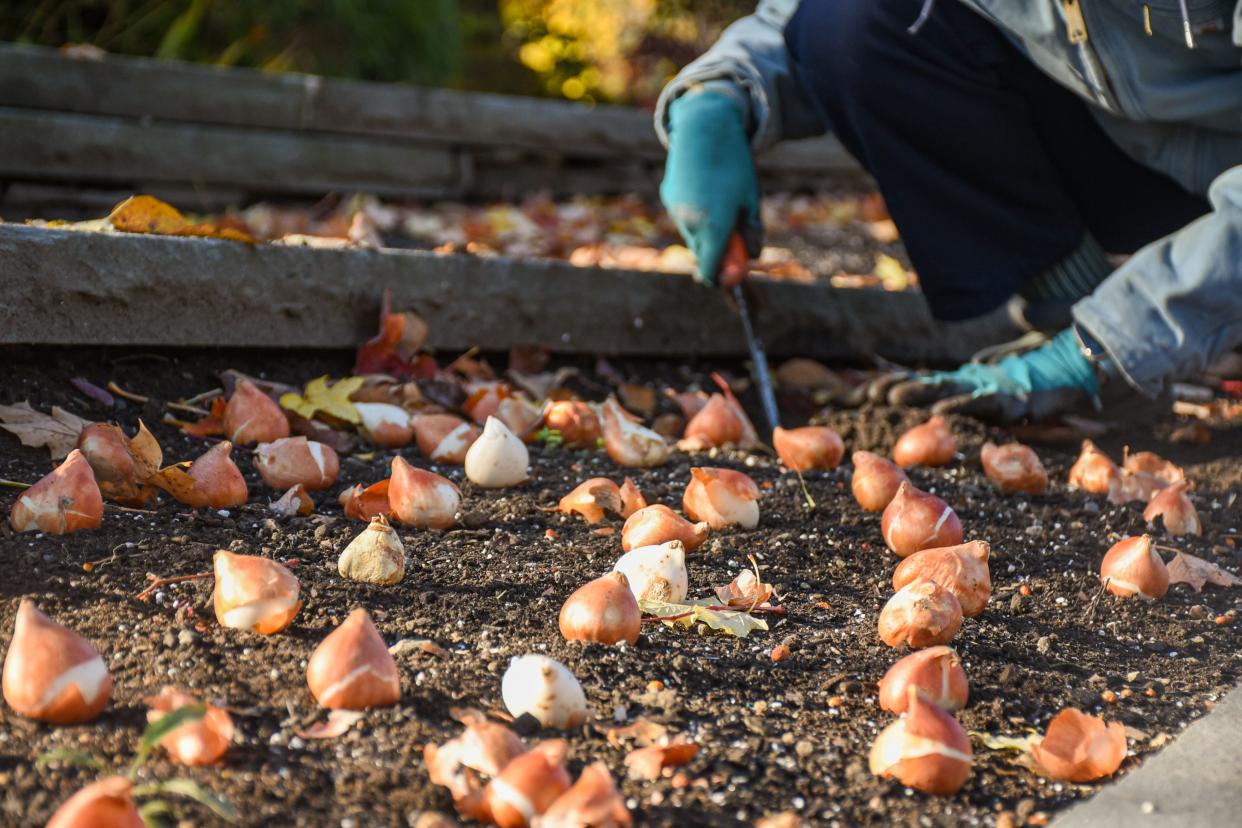New England Botanic Garden offers fall planting tips for a spectacular home garden.

You don’t have to plant tens of thousands of bulbs each fall like we do at New England Botanic Garden to have a stunning spring display in your home garden. Bulbs, in almost any amount, can be a wonderful addition to your garden. They add a layer of interest by blooming at a time when many of our perennials are still dormant, they attract pollinators, and they are relatively low maintenance.
Besides knowing the basics of bulb planting — such as, there are some bulbs you plant in the fall and some you plant in the spring, plant pointy side up, and plant two to three times deep as the bulb is tall — there are a few dos and don’ts that will bring your display to the next level.
Do try out minor bulbs. Most people think of tulips and daffodils when they think about bulbs, but there are so many more bulbs that can add interest to your garden and really extend the bloom time. Often, I get the most excited about the very early blooming bulbs such as snowdrops (Galanthus) and crocus. When there are no leaves on deciduous trees and the rest of my garden is still fast asleep, these blooms warm my heart and give me hope that spring is just around the corner. These bulbs are tiny, about the size of a coin, so you won’t need to plant them very deeply. Plant them in groups to get the most impact.
Don’t forget to check the cultural requirements of bulbs. The saying “right plant, right place” applies to bulbs too! Some bulbs, like common camas (Camassia quamash), like wetter soils and full sun, while others such as Siberian squill (Scilla siberica) can tolerate dry shade. Doing a little research goes a long way and bulb catalogs usually give a detailed description of what your bulb needs to thrive.
Do add alliums (and other early summer bulbs). This late-spring blooming onion relative is deer and rodent resistant, has a long bloom period, and attracts butterflies. It adds structure to your garden with a sphere of small flowers on tall vertical stalks. Try cultivars like ‘Gladiator’ or ‘Ambassador’ for a big impact.
Do choose bulbs that will naturalize to get more bang for your buck. In our area, tulips, although showy and beautiful, aren’t guaranteed to come back year after year. Instead, try out daffodils. With hundreds, perhaps thousands of different varieties, you can find a daffodil in the shape, size, and color to fit your garden and come back year after year.
Don’t cut off the foliage right away — keep this in mind come spring. It can be tempting to remove the foliage after the flowers are finished blooming, but the leaves will still photosynthesize for weeks or months, storing food for the plant in the bulb so it can overwinter and emerge with healthy new blooms next year.
Do think about companion planting. When foliage starts to look a bit ugly, it is helpful to have other perennials interplanted to hide it. Daffodils and daylilies are a tried-and-true combination. When the daffodil foliage is fading, the daylilies are coming into their prime. This also ensures sequential blooms in your garden to prolong the interest. You can choose any perennial as long as it has the same growing requirements as the bulb. Ensure your selection is still small when the bulb blooms, so the plant doesn’t hide it.
Don’t start planting before you lay out your whole design. It may sound obvious, but I have more than once made the mistake of planting some of my bulbs for the season and forgetting where I planted them. Then when I get back to planting the rest, I have the “uh oh” moment and waste time trying to remember so I don’t add more bulbs on top of the first group. If you can’t set aside enough time to plant all of your bulbs at once, take photos, do a sketch, or stake out the areas where you have planted to avoid double planting. And if you do double plant, don’t sweat it. Maybe something beautiful and unexpected will come from your mistake!
Gardening Central Mass. is written by New England Botanic Garden at Tower Hill CEO Grace Elton and Director of Horticulture Mark Richardson. Located on 171 acres in Boylston. New England Botanic Garden creates experiences with plants that inspire people and improve the world. Learn more at www.nebg.org. The column is published on the third Sunday of the month.
This article originally appeared on Telegram & Gazette: Gardening Central Mass.: Seven dos and Don’ts of Autumn bulb planting

